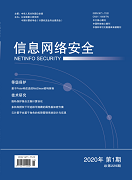With the rapid development of the Internet , the quantity of web services has proliferated, which makes the deployment of operating systems and application services more and more challenging. The development of cloud computing and virtualization has led to improvements in these issues. Although virtual machine technology has good isolation, it usually faces problems such as large virtualization overhead, poor scalability and long deployment time. The container technology represented by Docker has improved these problems very well, which allows us to quickly build, deploy, operate and extend services. On the other hand, Rights management is an important part of almost all application systems. Its main purpose is to control and manage the rights of the system. Control of system permissions is very important and necessary. Otherwise, system information leakage, system vulnerabilities and unpredictable losses to users will be caused. We should try to avoid risk problems caused by lack of permission control or improper operation. To solve this problem, this paper proposes a method of applying the role-based rights management model to the system to flexibly manage the rights, and deploys the system on the cloud platform using PaaS idea, enabling development. The personnel can develop, deploy and operate the system efficiently and flexibly on the cloud platform, which greatly improves resource utilization and time efficiency.

